Human Being's Reaction to Oppression
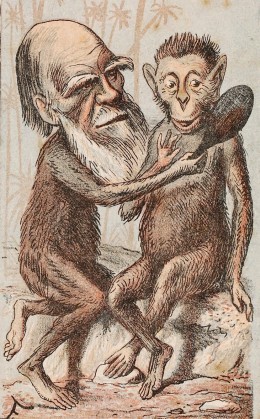 |
| Cartoon of Darwin Source |
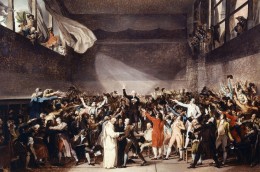 |
| The French Revolution Source |
If we are lead to believe that whatever is done to our folks is right, then, we tend not to do much against it. This is the reason why the faithful blame the ideology and the atheists blame the faiths. Painful life just continues. For example, many Indians did not bother about the British Raj till they were enticed, and French peasants were exploited for centuries till the time of the French Revolution.
However, it is said that you can fool some people for some time, but you cannot fool all the people all the time. That is, probably, why there have been many minor and major revolutions in the world, even since man evolved beyond the monkeys - borrowing knowledge from the evolutionist of course.
The Indian Caste Exploitation - All Ingredients For a Revolution
But
then, almost like the Muslim's surprise of not Islamicism India like
Persia or Egypt despite centuries of Muslim rule in India, or the
Christian's surprise of managing less than 2% of converts despite
slicing almost half the Muslim's time there, India offers a 3rd surprise
in its caste system.
With it having high caste oppressing lower caste and practicing heinous untouchability, later ones being confined to their poor, unhealthy areas and misbehaved upon, and the rich Indologists constantly blaming Brahmanism and using the term Brahminical exploitation India had almost every ingredient for a revolution by the oppressed. Furthermore, there was no reason to believe that Indians were any different to the French or the Americans, who revolted against their oppressors. More importantly, these exploitations have been going on since God knows for how long? Several millennia. If nothing else, why not something like a reformation movement against the powerful Catholic Church?
Despite all that, all these centuries India showed no sign of a social revolution by the oppressed. While this is a major surprise, Indologists being busy with blaming Brahmanism (their thoughts ended there) but not even asking the question, 'Why there was no revolution?', is not less surprising. Yes, the obvious oppression is screamed about and despite all Indians projecting a united gene pool, 'Dalits' are made to replace the Dravidians in the AIT scheme of things. Even their origins in Africa are dragged in to explain the oppression. But, this is possibly the first time, when the reason behind the lack of a social revolution is questioned. And matching the surprise aired above, even answered.
But then, before we understand the caste system and blame Hinduism, we need to understand Hinduism sanctioned Varna system.
With it having high caste oppressing lower caste and practicing heinous untouchability, later ones being confined to their poor, unhealthy areas and misbehaved upon, and the rich Indologists constantly blaming Brahmanism and using the term Brahminical exploitation India had almost every ingredient for a revolution by the oppressed. Furthermore, there was no reason to believe that Indians were any different to the French or the Americans, who revolted against their oppressors. More importantly, these exploitations have been going on since God knows for how long? Several millennia. If nothing else, why not something like a reformation movement against the powerful Catholic Church?
Despite all that, all these centuries India showed no sign of a social revolution by the oppressed. While this is a major surprise, Indologists being busy with blaming Brahmanism (their thoughts ended there) but not even asking the question, 'Why there was no revolution?', is not less surprising. Yes, the obvious oppression is screamed about and despite all Indians projecting a united gene pool, 'Dalits' are made to replace the Dravidians in the AIT scheme of things. Even their origins in Africa are dragged in to explain the oppression. But, this is possibly the first time, when the reason behind the lack of a social revolution is questioned. And matching the surprise aired above, even answered.
But then, before we understand the caste system and blame Hinduism, we need to understand Hinduism sanctioned Varna system.
India's Map
The Hindu Varna System:
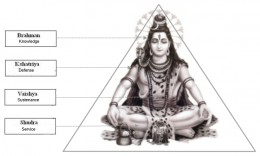 |
The Varna Anatomy Source |
It is for this reason; Hinduism divides humanity into two groups:
1. Grihastha, the family group.
2. Sadhus, the hermit group, who leave family and seek God.
While, reminding class struggle, the rest of the world saw society economically (financially and numerically) dividing people into 3 uneasy groups - upper, middle and lower classes - a system that is still adhered to in the UK, numerically adding one more yet seeing them as power centres and seeking a team work to produce a harmonious and progressive society, Hindu Varna system sought the coordination of 4 social powers - the Varnas.
The Varnas included the Brahmans (teachers), the Kshatriyas (rulers and defenders), the Vaisyas (traders and farmers) and the Sudras (the helping masses). These are not just arbitrary group names, but each has an inherent power (not necessarily economic) attached. For example, Brahman has the power of knowledge, the Kshatriya has of authority, the Vaisya has of wealth (who can forget the influence of Mr. Murdock on UK politics) and the Sudras have the power of the numbers (Who can forget trade unions?).
Consequently, while it makes a healthy body symbolise the society, not forgetting the function and the inherent Varna power, it designates body parts to each Varna Rigvedic Purusha Sukta (RV 10.90.11–12). Thus, head/ brain represents the Brahman, arms the Kshatriya, torso or tummy the Vaisya and the legs as support represent the Sudras.
This symbolism, however, says more. Since a body is healthy only when all organs function properly as a team, it denies Varna arrogance as 'My Varna is greater.' It rather highlights the necessity and therefore importance of all Varnas. Although a teamwork is seen, and it sounds like a commune working for an ideal, unlike in communism, dharma dictates here.
It does not stop there; it narrates more rules to bring about, what it calls, an egalitarian society:
The Rules of The Varna System:
1. At birth all are Sudras.
2. Like doctors, lawyers, etc. these Sudras enter into any one of the educated 3 Varnas (Dvija), through aptitude aided training.
3. Absolute power corrupts absolutely and brings about the arrogance that can't be good for a healthy society. Since the addition of a 2nd Varna brings additional power, if not incompetence, the addition of the 2nd Varna power is frowned upon. A filthy rich Brahmin usurping two Varna powers, for example, is frowned upon.
4. Almost reminding the justice of some modern judges, it sees no equality in punishment. Tracing 'uneasy lies the head that wears the crown' and 'he should know better' a Brahmin gets harder punishment than a Sudra.
5. It is not purity based and, therefore, has no untouchability.
The Caste System: A Hindu Sin
Although
the caste system borrows the names - Brahman, Kshatriya, Vaisya and
Sudra of the Varna system, the borrowing and the similarities with the
latter end there.
Arguing unmarried men's needs in the priests abusing kids, although
some accuse Catholicism of enhancing paedophilia, it is not a Catholic
teaching. Similarly, the caste system is not Hindu ordained. Instead,
the casteism act goes against the Hindu teaching and thus become a Hindu
sin.
But then, most Hindus do practice it. And strangely enough, even people of other faiths, including Muslims and Christians in India, practice it. The Catholic Church has even made it official and categorised churches for the untouchables.
In any case, the caste system is a social institution that is based on purity that adds untouchability to the four suggested above. It, therefore, is spoken of as the high caste and the low caste. Being birth based, a person is born into the caste of the father, and that remains unchanged, throughout life.
But then, with social corruption being the rule, even the 5 castes
could not remain so. Each caste is divided into sub-castes. There could,
for example, be several classes (sub-castes) of Brahmins. In addition,
in the absence of the restrictions, a Brahmin could easily plough the
field and still retain the caste by his birth i.e. Brahmin - albeit a
lesser one. Lower caste marriage or other factors, however, could make
one slide down in the caste ladder.
The rigidity not only made the lower caste people suffer, as suggested below but aptitude lead desire for a different caste job didn't make even the high caste born enthusiast really happy.
In addition, while Sudras did not have access to the Vedas - the highest scriptures -the untouchable were simply not allowed to touch the others. It was not only that the latter's body was impure to the higher caste people, what he or she touched was impure too. Water, the most important material, touched by them was a no for the rest. Although they were needed for menial and other jobs for the upper castes, being untouchable they had to live separately in a different place and with their own amenities. They and the lower caste people were poor, and violence against them was not uncommon.
Yes, done mostly by the higher caste people, India did have a political revolution and showing empathy for the ageless distress, they did make discrimination and untouchability illegal. They also offered reservation to what Gandhi called, the 'Harijans' (God's children).
But the question, 'Why there was no social revolution against the higher castes' still remains. And the answer is surprisingly found in the understanding of the concept of middle-class in the economic class system.
 |
| The Untouchables Source |
But then, most Hindus do practice it. And strangely enough, even people of other faiths, including Muslims and Christians in India, practice it. The Catholic Church has even made it official and categorised churches for the untouchables.
In any case, the caste system is a social institution that is based on purity that adds untouchability to the four suggested above. It, therefore, is spoken of as the high caste and the low caste. Being birth based, a person is born into the caste of the father, and that remains unchanged, throughout life.
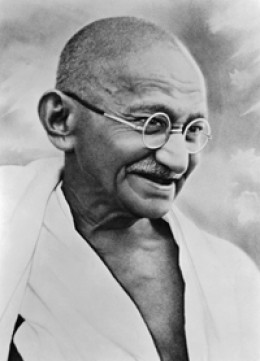 |
| Gandhi Source |
The rigidity not only made the lower caste people suffer, as suggested below but aptitude lead desire for a different caste job didn't make even the high caste born enthusiast really happy.
In addition, while Sudras did not have access to the Vedas - the highest scriptures -the untouchable were simply not allowed to touch the others. It was not only that the latter's body was impure to the higher caste people, what he or she touched was impure too. Water, the most important material, touched by them was a no for the rest. Although they were needed for menial and other jobs for the upper castes, being untouchable they had to live separately in a different place and with their own amenities. They and the lower caste people were poor, and violence against them was not uncommon.
Yes, done mostly by the higher caste people, India did have a political revolution and showing empathy for the ageless distress, they did make discrimination and untouchability illegal. They also offered reservation to what Gandhi called, the 'Harijans' (God's children).
But the question, 'Why there was no social revolution against the higher castes' still remains. And the answer is surprisingly found in the understanding of the concept of middle-class in the economic class system.
The Middle-class Concept:
The
Social five castes system has got nothing to do with the economic
middle class, but surprisingly the middle-class concept of the economic
three class system better explains it.
This is because, in the upper, middle and lower class tensions, while the upper class gets the joy of getting respect from all and seeing its paucity, the lower class gets used to giving respect to the other two, the middle class is in an odd and uneasy position. It looks like it is at war with itself. Because it has the means to have a comfortable living, it resents ways and the means of the upper class. But then, as a balancing act, it feels comfortable by the honour bestowed by the lower class. This is why this 'unstable' and dangerously educated class is at peace with itself and therefore does not revolt against the upper class. It learns to live with the realities of life and is comfortable with the system. In fact, it takes a huge amount of indoctrination that is incidentally known to the communists, to make it revolt.
This is because, in the upper, middle and lower class tensions, while the upper class gets the joy of getting respect from all and seeing its paucity, the lower class gets used to giving respect to the other two, the middle class is in an odd and uneasy position. It looks like it is at war with itself. Because it has the means to have a comfortable living, it resents ways and the means of the upper class. But then, as a balancing act, it feels comfortable by the honour bestowed by the lower class. This is why this 'unstable' and dangerously educated class is at peace with itself and therefore does not revolt against the upper class. It learns to live with the realities of life and is comfortable with the system. In fact, it takes a huge amount of indoctrination that is incidentally known to the communists, to make it revolt.
The Concept Aided Caste Stability
This is amazingly applied to explain the caste system's stability!!
It is simple, however. While the caste system has a hierarchy, sub-castes in each caste has its own hierarchy. Brahmins have it. Sudras are no exception, for they too have a similar hierarchy. Not known to many, even the untouchables have a hierarchical sub-castes!!
This means that almost as middle-class, while the Sudras have the upper three castes and their own caste's upper sub-caste ones to respect albeit with resentment, they also have the untouchables and the lower Sudras sub-caste ones who had to give them the desired respect. It was the same with the untouchables too. Yes, like the middle-class, the untouchables would definitely resent the ways of the upper four castes, whom they were compelled to respect and not even touch, but they would regard their lower sub-castes e.g. scavengers as untouchables too!!
It is simple, however. While the caste system has a hierarchy, sub-castes in each caste has its own hierarchy. Brahmins have it. Sudras are no exception, for they too have a similar hierarchy. Not known to many, even the untouchables have a hierarchical sub-castes!!
This means that almost as middle-class, while the Sudras have the upper three castes and their own caste's upper sub-caste ones to respect albeit with resentment, they also have the untouchables and the lower Sudras sub-caste ones who had to give them the desired respect. It was the same with the untouchables too. Yes, like the middle-class, the untouchables would definitely resent the ways of the upper four castes, whom they were compelled to respect and not even touch, but they would regard their lower sub-castes e.g. scavengers as untouchables too!!
No Chance For a Social Revolution
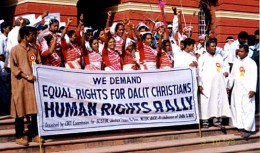 |
The Untouchable Christians Source |
Well, with all that, revolution had no chance, and that is why it lasted so long. The rigidity is such that it is even finding it hard to go away today. Although things are changing now, Dalit Christians have petitioned in the UN against the Pope.

No comments:
Post a Comment